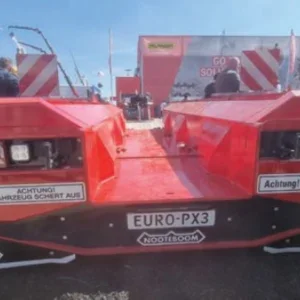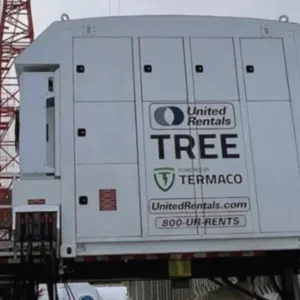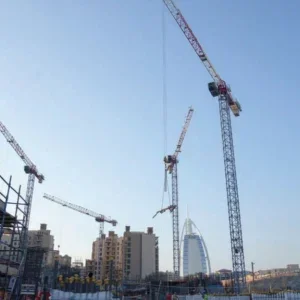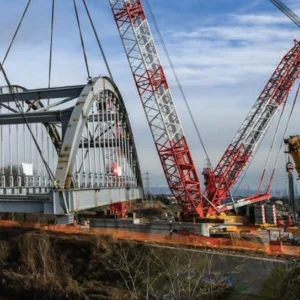Hong Kong’s skyline is constantly changing and constantly growing as old buildings are replaced and new ones built from scratch. One of the most high profile jobs in the area at present is Nina Towers, a pair of skyscraper towers connected by a skybridge, rather like Kuala Lumpur’s Petronas Towers that starred with Sean Connery and Catherine Zeta Jones in Entrapment. The Nina Towers will incorporate an exhibition hall, banqueting centre, office space and more than 2,000 rooms. Developer Chinachem Group will undertake construction work using its own in-house construction team led by KT Heng and CC Wong.
The buidings are named after Nina Wang, Chinachem’s owner and Asia’s richest woman. (All that might change, though, if she loses her legal battle with her father-in-law. In 2002 a court ruled that Nina had forged a will in the name of her late husband Teddy, who disappeared after being kidnapped in 1990. Her appeal began last September.)
At the centre of the construction project are five Potain tower cranes supplied by Manta Engineering & Equipment, the local Potain dealer with whom Chinachem has been dealing for the past 20 years. Tower 1, which will eventually reach a height of 175m, is being built with two 12t capacity MC 265 saddle jib cranes.
But it is the taller Tower 2 that is the focal point of the project. It has one MR 605 luffing jib tower crane and two MR 220 luffers. The MR 605 has been equipped with a 40m jib and can lift a maximum of 32t or at jib-end 17.5t. One of the MR 220s has been rigged with a 45m jib, the other with a 50m jib. The shorter one can lift a maximum of 12t, or 4.15t at jib-end, while the one with the50m jib can lift a maximum of 10t, or 3.25t at jib-end. The cranes on Tower 2 were purchased by Chinachem, while those on Tower 1 are on a rental contract.
Nina Tower 2 will eventually reach a height of 325m. To achieve such a height on such a small footprint the building will incorporate huge steel supports between floors 24 and 27 and between 53 and 56. These steel stiffeners, which comprise more than 2,000t of steel, provide the lateral stability that enables the building to reach its planned height. Chinachem will use the floors which house the steel supports to locate mechanical and electrical services for the building.
The MR 605 on Tower 2 is handling all of this steel for the supports along with the 8.5t I-beams used in the building’s columns. There are a total of eight columns supporting the Towers, each of which consists of a central I-beam surrounded by reinforced concrete. Each 12m I-beam covers three floors of the building. The two MR 220 luffers working on Tower 2 are handling the reinforcement steel and formwork. And there is a lot of material to be handled. In total Tower 2 will comprise 75,000m3 of concrete, 210,000m3 of formwork, 15,000t of reinforcement steel and 1,000t of post tension steel. Both the MR 605 unit and the MR 220 with the 50m jib will be climbed up the side of Tower 2 until the building work is completed.
Albert Kung, senior construction manager with Chinachem, says the choice of cranes was based on a number of factors: ‘We chose these cranes because their capacity and size are most suitable for the project. They require a relatively small area for installation. We decided to use three cranes for Tower 2 based on the careful calculation of lifting requirements and work sequence. The choice of luffing jib cranes resolves the safety issue caused by the site constraints.’
Completion is scheduled for 2005.






